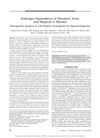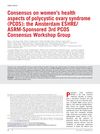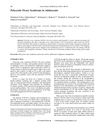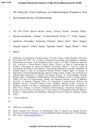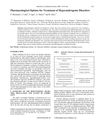Targeting Pharmacological and Nanotechnology Based Therapeutics for Management of Hirsutism: A Comprehensive State-of-the-Art
December 2023
in “
̒Ulūm-i dārūyī
”
hirsutism androgens polycystic ovarian syndrome Cushing syndrome insulin resistance congenital adrenal hyperplasia ovarian tumors adrenal tumors menopause oral contraceptives antiandrogen therapy spironolactone cyproterone acetate flutamide finasteride insulin-lowering medicines gonadotrophin-releasing hormone agonists eflornithine hydrochloride cream nanostructured lipid carriers solid lipid nanoparticles liposomes cerosomes nanogel PCOS birth control pills Aldactone Androcur Eulexin Propecia Vaniqa NLC SLN
TLDR New treatments for excessive hair growth in women, including advanced drugs and nanotechnology, show promise for better results.
Hirsutism, characterized by excessive coarse hair growth in women, affects 5 to 10% of females of reproductive age and is often caused by an overabundance of androgens secreted by the ovaries or adrenal glands. Various causes include polycystic ovarian syndrome, Cushing syndrome, insulin resistance, congenital adrenal hyperplasia, ovarian or adrenal tumors, menopause, and certain drugs. Polycystic ovary syndrome and ovarian tumors are common causes of hyperandrogenism, leading to hirsutism. Treatments include oral contraceptives, antiandrogen therapy (spironolactone, cyproterone acetate, flutamide, finasteride), insulin-lowering medicines, gonadotrophin-releasing hormone agonists, and topical treatment such as eflornithine hydrochloride cream. The review also highlights the role of nanotechnology-based methods like nanostructured lipid carriers, solid lipid nanoparticles, liposomes, cerosomes, and nanogel in enhancing the effectiveness of hirsutism medications.
